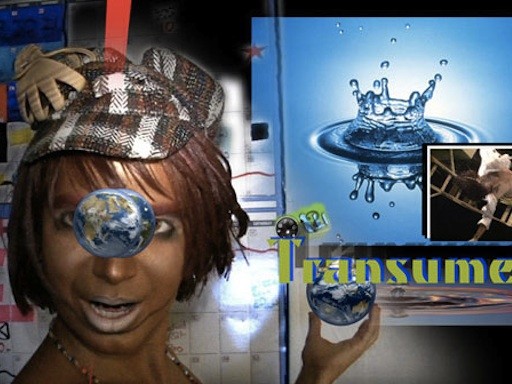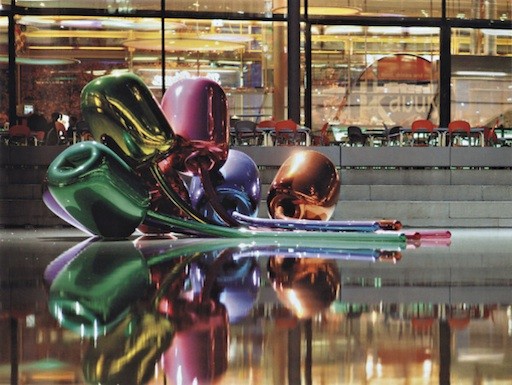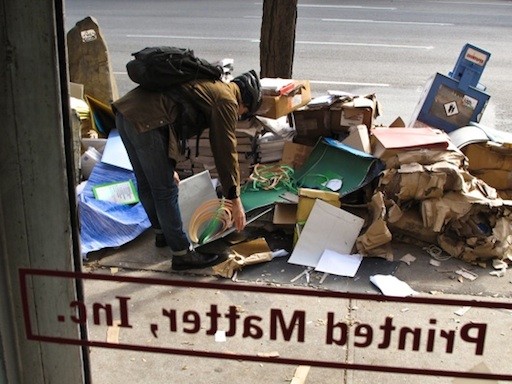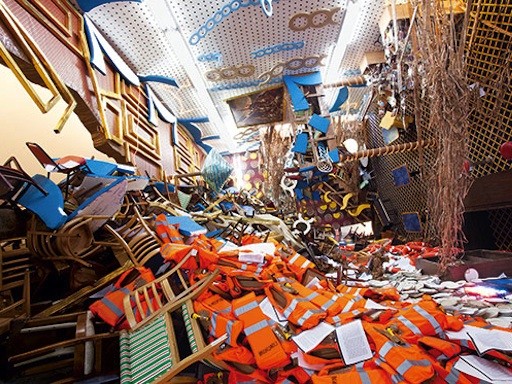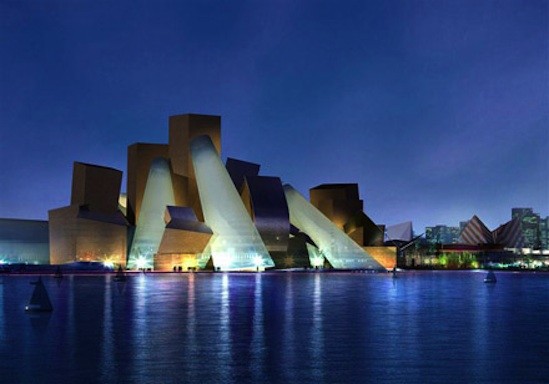— THE BIG STORY —
There was a story about the "myth of the online art market" in the New Republic recently that first caught my attention due to its description of Artspace, which managed to be at once brief and entirely, egregiously wrong. (Anyone who has made even a cursory inspection of our site and its range of major artists, mediums, and price points would know that we don't sell "photos and prints by unknowns for under $100.") Given this glaring error, I decided to delve into the article a little further to see what else was amiss. This turned out to be a rewarding experience.
As one might expect from the New Republic, the thesis of author Jason Farago's attack on the online art market boils down to the same conservative stance we know from New Republic art critic Jed Perl's writings: old = good, new = baaaad. Here, Farago specifically argues that the art market and indeed the entire art ecosystem is inherently incompatible with "digitalization" and the Internet. "Artists, no less than dealers and museums, seem to have learned a lesson from other fields of cultural production, one to which the art startups remain curiously deaf: if digitalization threatens your mastery, the best thing to do is shut it out," he writes. As is the case with most ideologically motivated arguments, the article's "evidence" falls apart under inspection. So let's quickly go point-by-point through a few pillars of Farago's case.
1. "A lesson from other fields of cultural production… [is that] If digitalization threatens your mastery, the best thing to do is shut it out."
I don't know what "other fields of cultural production" he may be thinking of, but if I recall the movie, music, book, and media industries all tried to shut out digitalization… and that didn't work out too well, did it? Maybe he's thinking about dance.
2. "There’s simply no possibility of a viral digital success—a “Call Me Maybe” of painting or photography—because a work only becomes successful upon its art world approbation."
To point out that Shepard Fairey's "Hope" poster went viral overnight; made millions and millions of dollars; is now in the collection of the National Portrait Gallery; and has been exhibited in major contemporary art museums seems too easy. A more interesting point is that since visual culture is increasingly being driven and expressed online, we can expect this to happen more and more frequently—as ineluctably as climate change will yield more and more superstorms.
3. "Indeed, as the art historian [and participatory-art theorist] Claire Bishop has argued, the most consequential shift in art since 1990 has been away from technology, not toward it."
Already, the wave of participation-based museum shows we've seen over the past few years is being overtaken by exhibitions that don't revolt against digitalization but tackle it head-on, like the Ryan Trecartin and Wade Guyton surveys. Expect more to come.
4. "Disdaining the digital is, at its core, a survival strategy… [and] everybody in the art world knows this, from Larry Gagosian down to the freshest kids in art school."
For one thing, Larry Gagosian is an investor in Art.sy. For another thing, just look at the galleries that have partnered with Artspace. For one more thing, the idea that "the freshest kids in art school" are "disdaining the digital" is simply laughable.
**
All in all, this article is an object lesson in why conservatism is a dicey position to take when talking about the vanguard of art, whether it be the making or selling of it, or societal changes in general. The thing to do is set aside value judgements—not forever, but for a moment—and pay attention to what's happening right in front of your eyes.
— QUOTE OF THE WEEK —
"It's an original [Lucian] Freud. I wonder how much a collector would pay for that? A few million?… If it all goes horribly wrong I could get a skin graft and sell it!" — Supermodel Kate Moss revealing that the late painter gave her a tattoo of two swallows in the small of her back—using a technique involving a scalpel and permanent ink that he picked up in the Merchant Navy during World War II—after she posed for him in 2002.
— MUST READ —
KAWS Teaches Kids About Death With Thanksgiving Balloon — The street-artist-turned-figurine-artist had his debut at the Macy's Thanksgiving Day Parade with a 41-foot-long floating version of his "Companion," a creepy cartoon character that appears to be both dead and crying about it. (Gallerist NY)
Israel Museums Take Down Art After Rocket Attacks — The Tel Aviv Museum of Art and other institutions in the city have taken extraordinary measures to safeguard their art in the wake of Hamas missile strikes that came close to the city. (AP)
Art in America to Debut Redesign — To celebrate the magazine's 100th anniversary next year, editor-in-chief Lindsay Pollock will unveil a makeover of the venerable magazine (carried out by An Art Service) with 12 months' worth of covers designed by contemporary artists, starting with three Marlboro Man-featuring versions by Richard Prince. (NYT)
Watch Trevor Paglen Shoot His Art Into Space — The launch of the artist's rocket-fueled art project for Creative Time, which will bear his series of "Last Pictures" of Earth into space alongside a satellite, is dramatically captured in this highlight reel. (International Launch Services)
"Go and Buy an Arty Silk Scarf From James Franco" — That's Jonathan Jones's advice for those able to make it to the House of Voltaire in London, where the actor/artist is selling aesthetic objects to help raise money for the Studio Voltaire art gallery. (Guardian)
Where Street Style and High Art Meet —Alex Williams has a wonderful piece about Supreme, the hypercool fashion company that has everyone from Damien Hirst to Lou Reed drooling over the prospect of soaking up some associative currency by doing collaborations with the brand. (NYT)
Richard Phillips Has a Star Turn on Gossip Girl — The celebrity-appropriating artist has stepped further through the looking glass of postmodern self-reflexivity by making a cameo on the show—whose actors he has painted—as an artist selling a Lindsay Lohan painting at an Art Production Fund benefit. (Artinfo)
M. Wells Gets Rave at MoMA PS1 — Restaurant critic Pete "Killer" Wells gives the avant-garde eatery's new schoolhouse incarnation two stars and his personal seal of approval, writing, "PS1 should be congratulated for landing a restaurant that suits the neighborhood and the museum’s audience"—which sounds great, though P. Wells might be a little biased. (NYT)
New Parrish Art Museum Building Praised, Too —Justin Davidson writes that when looking at Herzog & de Meuron's subtle $26 million double-peaked-barn design for the Water Mill museum it's "immediately apparent how much subtlety and sophistication the architects have smuggled into the plain shed." (NYM)
Scholar Calls Dead Priest a Hopper Thief — "How did he get hundreds of drawings?" Edward Hopper expert Gail Levin asks of the late Reverend Arthayer R. Sanborn, who amassed a major collection of the artist's work. "He had the key to the family home in Nyack." (NYT)
Kate Middleton Is a Jolly Good Photographer — It looks like the poised art school grad and future royal matriarch is rather handy with the point-and-shoot, if the very nice photographs of Southeast Asia she posted on the official Duke and Duchess of Cambridge website are any indication. (Guardian)
Will a Tiny Copyright Case Prove the End of U.S. Museums as We Know Them? — No, obviously. (Gallerist NY)
— ART MARKET —
How Advanced Art and Innovative Banking Are Alike — Thanks to Andrew Russeth for pointing out this chewy piece by Rachel Cohen in the Believer's art issue about how the vanguard of both fields create new ways to "represent progress toward the future," though read to the bottom to find out where the similarities end (and to read a knockout Met vignette). (Believer, via Gallerist NY)
The Art World's Mr. Contrarian Strikes Again —Adam Lindemann, the art collector and owner of the refreshing Venus Over Manhattan gallery (who may or may not appear at Art Basel Miami Beach this year), has issued a riposte to Sarah Thornton's why-I-never essay on the supposed corruption of the art market that contains two particularly provocative lines: "Believe me, innocent moms and pops don’t buy art" and "I wish I could be cool and agree, but I really like [oligarchs and dictators]—especially if they are buying what I am selling." (Adam Lindemann)
Other Pundits Flee Art Market Too —Felix Salmon points out that Thornton has recently been joined in her revolt by such figures as critics Dave Hickey and Jerry Saltz, who object because of a sea change in the way the art market works: "There’s long been a disconnect between critical acclaim and high prices, but so long as the art market pumped money into the broader art ecosystem, no one really minded that. Rather, what seems to have changed is that art—art itself, divorced from commerce—has been drowned in the flood of money." (Reuters)
Pinta Art Fair Brought Latin Galleries to NYC —The event brought 60 exhibitors from Latin America, Spain, and Portugal to midtown last weekend, offering work by artists from Brazilian sculptor Willys de Castro to Henri Cartier-Bresson, who shot and printed a series in Cuba. (Artinfo)
Pinta Also Brought Some Controversy — Among the members of the glamorous crowd who flocked to the fair was Vilma Rodríguez Castro, granddaughter of current Cuban strongman Raúl Castro (and girlfriend of exhibiting Cuban artist Arles del Rio), and Anti-Castro Cuban-Americans were furious that the U.S. granted her a visa. (Artinfo)
Is the Renaissance Staging a Market Comeback? — Sober-minded art professionals have long been scandalized by the disparity in prices between historically vetted Old Master paintings (e.g., a Tintoretto portrait selling for $418,000 at Christie's Londonin 2010) and contemporary artworks (e.g., Jeff Koons's "Tulips"—from an edition of five—selling for $33.7 million at Christie's this month), but Carol Vogel reports that "a significant group of collectors with new money, from places including Russia, China, Europe, the Middle East, Mexico and South America, is showing a special interest in art from the 14th through the 16th centuries." (NYT)
New Fair to Debut During NYC Frieze Week — Veteran art-fair-launcher Sanford Smith plans to debut a new event called The Salon: MasterWorks (quick aside: why must so many fair titles have such high-maintenance capitalization and formatting quirks?) that will open at the Park Avenue Armory during Frieze NYC and function as a kind of analogue to Frieze Masters in London. (Gallerist NY)
Christie's Wins Hilarious Lawsuit — The world's leading auction house has triumphed over Chritrs, a Chinese auction site whose name (pronounced and written similarly to "Christie's" in Chinese) and site design are obvious knockoffs of the Western company. (Artinfo)
Laurel Gitlen Gallery Moves — The Lower East Side operation is heading a few blocks north to Norfolk Street, where it will join fellow newcomers Lisa Cooley and Thierry Goldberg. (Artinfo)
— IN & OUT —
Beleaguered NEA chairman Rocco Landesman (brother of Artforum publisher Knight Landesman) will step down at the end of the year after a single term of battling a shrinking budget, nonstop Republican attacks, and his own bullish forthrightness about the limits of public funding that upset smaller arts organizations (in Peoria, for instance). (Press Release)
Congratulations to Artspace artist Orly Genger, who has been commissioned by New York's Madison Square Park to create a staggeringly ambitious sculpture made of 1.4 million feet of painted nautical rope, which will then travel next fall to the deCordova Sculplture Park and Museum. (NYT)
Julian Schnabel has gotten engaged to former Victoria's Secret model and current Hole Gallery staffer May Andersen, whom he has been dating since April. (NY Post)
Sculptor Oliviero Rainaldo has unveiled a slightly more human-looking version of his 16-foot-tall statue of Pope John Paul outside Rome's Termini train station, though critics say the work—whose previous incarnation was likened to a public urinal—still sucks. (Telegraph)
Germany and France have announced that they will swap pavilions at the Venice Biennale in what is described a symbolic reflection of the art world as "a whole that is open and fluid." (Artinfo)
Dénes Farkas will represent Estonia in next year's Venice Biennale. (Gallerist NY)
Former New York Times and Art in America art critic Brian O'Doherty (who on the side is an artist, novelist, documentarian, and biographer) has been awarded this year's distinguished $25,000 Clark Prize for Excellence in Art Writing. (Art in America)
Scottish sculptor William Turnbull, an artist whose seven-decade career saw an evolution from Giacometti-esque figuration to Minimalism and then back again, has passed away at the age of 90. (NYT)
Marshall J. Bouldin III, the "son of the most prominent cotton farmer in Clarksdale" who went on to become a painter of Republican political leaders and assorted good old boys whose portraits were "considered one of the ultimate perks of power in the South," has passed away at the age of 89. (NYT)
A1 News RoundupWhat the New Republic Gets Wrong About the Online Art Market, Kate Moss's Lucian Freud Tattoo, and More Top Art News
